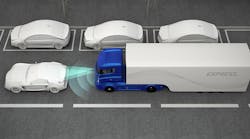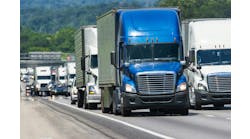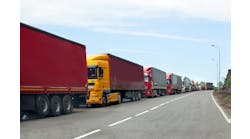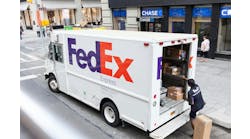Autonomous commercial vehicles will be arriving in the not-too-distant future and their impact will be as great upon the commercial goods transport sector as that of the introduction of the railroads over 160 years ago. Many sectors of the economy will benefit from this major disruption in the trucking sector, from lower transport rates, to less road congestion, to less air pollution and much more, but for many participants in the commercial vehicle ecosystem, major challenges will present both favorable and unfavorable impacts upon their business models.
This article discusses what segments will be impacted and how those challenges will evolve.
Drivers
Truck drivers could very well ultimately be eliminated, although this process will be gradual as initial deployments will include human drivers in the cab for mitigating risks of malfunctions. All the driving itself, however, will be done autonomously, and then once the technology is perfected and deemed “safe,” human drivers will be phased out. Truck drivers who have been able to achieve middle class incomes without a post-secondary school education will suffer greatly.
But some of the drivers may be retrained to be network administrators to optimize autonomous fleet utilization, though these individuals will constitute only a small percent of the current drivers.
Truck OEMs
The design of commercial trucks will dramatically change, driven by the need to increase their durability due to much higher utilization rates (i.e., driver hours-of-service limits will no longer exist), but also by more stringent imposition of safety requirements, as well as the need to enable frequent technology upgrades employed over the life of the vehicle. With future utilization rates approaching 50-100% higher than current rates, it is my belief that truck production will plummet, but the price per truck will increase significantly, somewhat off-setting unit volume loss. The current production facilities and direct line workers will shrink proportionately.
Trucks will also be designed to be remanufactured/upgraded on a periodic basis for safety and capability upgrade purposes. As a result of the design for remanufacturing/upgrading, depreciation costs as a percent of revenue generated will be significantly lower than the current business model; trucks will be remanufactured/upgraded multiple times over their economic life. How the OEMs will adapt their business model to this paradigm shift will dictate whether they live or die.
OEM Truck Dealerships
With new truck sales decreasing significantly, dealers will be required to completely revamp their business model. The question is what will be the model that they will adopt: will they be engaged in the ownership of the autonomous vehicle through operating leases to trucking firms, and/or reap the revenue of remanufacturing/upgrade?
The traditional sales team will most likely be completely converted to technology solution providers, but how this area evolves will be dependent upon the OEM’s sales channel strategy and who is ultimately the owner of the vehicle (i.e., not necessarily the operator). Note that Tesla does not have distributors.
Insurers
McKinsey, a management consulting firm, predicts that U.S. vehicle accident rates could drop by 90% as a result of autonomous vehicles; a human is materially a less safe driver than a robot. This might initially be beneficial to the collision insurance industry due to fewer claims, but ultimately collision insurance buyer fees will precipitously drop as claims plummet and the insurance marketplace drives prices down to levels in which costs and revenues are aligned.
But there may a major expansion of the business disruption insurance product line. As a result of the significant scheduling complexity involved in autonomous vehicles and the interdependence of many entities, just one glitch in the network could result in material losses of revenues due to unmet delivery performance guarantees. Such disruption insurance will expand in order to mitigate the costs of such events.
Maintenance Shops
Maintenance processes that correct and prevent failure will become less frequent as the owners of the autonomous vehicles continually attack their operating expenses [OpEx]. It is that my belief that operators will rarely own their vehicles and in turn the owners will focus upon their ROI, in which maintenance expenditures will be 15-25% of their OpEx.
Demand for tech-savvy technicians will increase, which will be a boon for vocational schools, but the legacy “wrench turners” will dramatically decline. Parts demand will also decline as more and more of the vehicle systems are driven by embedded software, rather than electromechanical movements that require many parts.
Collision Repair Shops
Coupled with reduced accident rates, demand for collision repairs will drop dramatically, impacting the number of technicians, parts, equipment and indirect personnel employed in the repair process.
But as a result of the complexity of the technology employed in the vehicles, the cost of repair may be significantly higher; thus a 90% drop in collision rates may be offset by a 50% increase in the cost per collision.
Lodging Establishments
Long-haul drivers either employ their cab or a lodging establishment when their daily driving limits are reached and they are away from their home base. With far fewer drivers, sleeper cab manufacturers will be hard hit, as well as low-cost motel/hotels that currently provide an average of 250 nights per year of lodging to drivers who do not sleep in their cab.
Truck Stops
For those facilities that are primarily focused upon long-distance truck operators, they will simply disappear. One bright spot may be their potential employment as refueling centers, and even then, fuel economy will dramatically improve due to a variety of factors, reducing the required number of fueling centers.
Driving Schools
Obviously there will be no need for such entities.
Healthcare Providers
Major healthcare expenses currently incurred as a result of collisions (e.g., emergency room visits), occupational injuries (e.g., carpal tunnel, back injuries) and retirement health benefits will disappear as well. This will provide a potential material improvement in profits for the trucking firms, but also for the well-being of individuals who would have chosen a career as a trucker.
In conclusion, the inevitable change for the sectors above will be gradual—somewhere between 20-40 years—but by strategically addressing this issue head-on, current participants in the trucking ecosystem will have a shot at successfully changing their business models to survive. If, however, they choose to put their heads-in-the-sand, they will die.
Ron Giuntini is principal of Giuntini & Company Inc., a management consulting, education and research organization focused on assisting military and commercial sectors develop and implement Product Support Business Case Analysis and outcome-based product support business models. He is also a member of MH&L’s Editorial Advisory Board.



